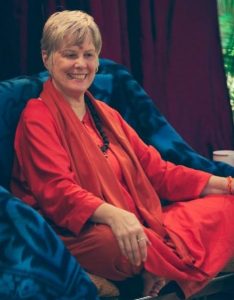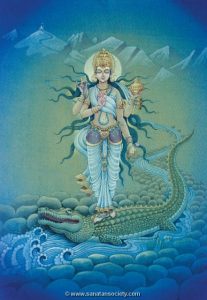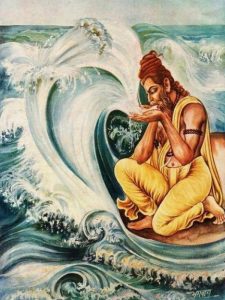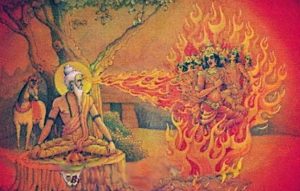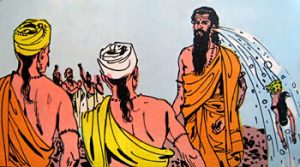Your heart is the crossroads between the finite and the infinite. This is why you have such a wonderful experience when you allow yourself to feel love. The one for whom you feel love is within the finite or material world. He, she or it triggers your experience of the infinite within your own being.
It doesn’t much matter who or what triggers this inner experience, except that you will always want more and more of it. It becomes a dependency, even an addiction. You need that external object in order to feel fulfilled. It could be a person, one who is in your life now or someone that is not available to you anymore. It could be a physical location, a place you go on vacation or your home. It can even be a physical thing, a favorite chair or a specific piece of music. Whether it is a person, a place or a thing, it is an external object, the object of your love.
When you allow that object to affect you, you feel an amazing experience within. Yoga acknowledges the central importance of this feeling in your life and calls it love, but also calls it bliss. When your inner experience fades (as it always does), then you want the outer object to trigger your inner feeling again. Sometimes it works and sometimes it doesn’t. Then you spend lots of time and energy trying to manipulate the external world, including other people, into triggering this inner experience for you again. This is because you must feel this inner feeling, for the feeling is life itself. Life without this inner feeling is so barren that you may begin to question if life is even worth living.
This inner experience is the goal of yoga. It is clearly explained in the texts that lay the foundation for the practices of Svaroopa® yoga. These tantric texts guide you through the process of interweaving the two seemingly different realities: the finite outer world and the infinite reality within. These are actually not two separate realities, though they seem to be separate. They are just two different expressions of the One Reality.
Just as water can be liquid, ice or steam, the One Reality (Shiva) manifests in many forms. One of the forms is you, and includes your own body, mind and heart, as well as other subtle levels of your being that you are not used to perceiving. The purpose of yoga is to discover all the levels of your own being, and to live in the knowing of your Self as Shiva, the One Reality. Then you recognize Shiva everywhere you look, inside or outside. You live with an open heart, loving everything and everyone, because each is another form of your Self. It doesn’t matter anymore if something is right or wrong, good or bad, pretty or ugly. You love it all.
There is a process you need to work your way through before you can live in this experience. All of the work that needs to be done is inner work. You don’t need to open your heart to something on the outside. You need to open your heart on the inside. Pause here for just a moment, because this is a radically different principle.
This is not about learning to love yourself. The cliché about loving yourself is the hardest thing in the world to actually do. Even worse than merely being difficult, it traps you in a constant inner split. This is because, in order for there to be love, there must be two. For you to love yourself, there has to be you (the you is being loved), and the one that loves you (which is another you). However, you cannot actually be two! There really is only one “you.” Yet, how can there be love when there is only one? There must be two for there to be love.
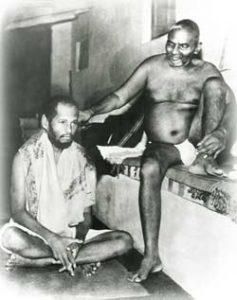 Yoga’s definition of love is “the Recognition of the One in the Two.” When you look deeply into someone’s eyes and see the light of their being, you feel this experience — inside. This inner feeling arises because the One in you has met the One in the other. It doesn’t happen every time, but when it does — WOW!
Yoga’s definition of love is “the Recognition of the One in the Two.” When you look deeply into someone’s eyes and see the light of their being, you feel this experience — inside. This inner feeling arises because the One in you has met the One in the other. It doesn’t happen every time, but when it does — WOW!
Now you probably want to jump up right now and go find someone you can connect deeply with in this way. It is a wonderful experience, but it is not yoga. Worse, it is destined to failure. There are two reasons why: (1) the person or thing that triggered the inner filling will not be a reliable trigger every time, and (2) even when the inner feeling does arise, it fades away — always. Let’s look at both of these more closely.
The object that triggers your inner experience is not a reliable trigger every time. If it is a person, sometimes they are being their most wonderful wonderfulness and sometimes they are in a rotten mood. If it is a place, sometimes it is beautiful, and sometimes the weather is bad or the plumbing is broken. If it is a physical thing, like ice cream, sometimes you can even eat a whole container of your favorite flavor and not really enjoy it.
What really happens is that it seems like your inner experience comes from the outer object, but it actually doesn’t. It is all ultimately only about your inner state. When you feel full on the inside, you can handle the bad weather and even the plumbing repair, while you laugh lovingly at the other person’s rotten mood. You don’t need a dish of ice cream to make yourself feel better because you already feel better. The “feeling better already” is yoga.
The second problem is that the inner experience fades away whenever something external causes it. This happens because you have a limited capacity to stay in it. You are used to looking on the outside, and cannot sustain the inner experience when it does arise. You can watch it happen. Someone or something triggers the upwelling of love inside and you allow it to fill you. You feel your body change. Your brain and whole nervous system is warmed with a wonderful feeling and your body floods your cells with bliss chemicals. You feel relaxed and have expanded awareness. Anxiety is banished, seemingly forever. Even the texture of the skin on your face softens. Your eyebrows widen and you smile.
Then your mind starts up, “I don’t know how long this will last. I remember the last time I felt this way, and everything turned out to be…” You shut the feeling down because you have been practicing looking outside for fulfillment all your life long. If you had practiced looking within, you would immerse yourself in these inner sensations, even to the extent ignoring the one who triggered them! Because the feeling itself is the most important thing. This feeling is the Infinite Reality Within. This is yoga.
Your heart is the crossroads between the finite and the infinite. The finite external object can trigger the experience of the infinite reality of your own being, Shiva. But the external object is not the important part. Your capacity to feel this inner feeling is what matters.
The only thing that blocks that capacity is fear. Every time you shut the feeling down or when you have trouble allowing it to arise inside, it is because of fear. The crazy part of this is, when you allow yourself to be filled with this feeling from the inside, you become free from fear! So, you have to ask, “What can I do to increase my inner capacity?”
 Do more yoga. This does not simply mean that you should do more yoga poses, though they help. Especially those tailbone release poses, because they free you from fear. Test it out for yourself. Anytime you feel any form of fear (anxiety, worry, concern, etc.), just do one of the Svaroopa® yoga poses that release the tensions in your tailbone muscles. Within a few minutes, the fear is gone.
Do more yoga. This does not simply mean that you should do more yoga poses, though they help. Especially those tailbone release poses, because they free you from fear. Test it out for yourself. Anytime you feel any form of fear (anxiety, worry, concern, etc.), just do one of the Svaroopa® yoga poses that release the tensions in your tailbone muscles. Within a few minutes, the fear is gone.
Now look deeper within for the source of love. Open your heart on the inside. Allow the feeling to arise from the infinite within, without depending on any external trigger. That inner experience will further establish you in freedom from fear, and it becomes something that supports from the inside.
Real yoga is more than just doing yoga poses. The real yoga is learning to live with your heart always open — open to the inside. Live with your heart being filled from the inner source, Shiva. Then you don’t live in the waiting, waiting for an outer object to trigger your inner experience. You live in the feeling of eternal fulfillment within. Open your heart to the inside — do more yoga!
Originally published February 2003, online access
